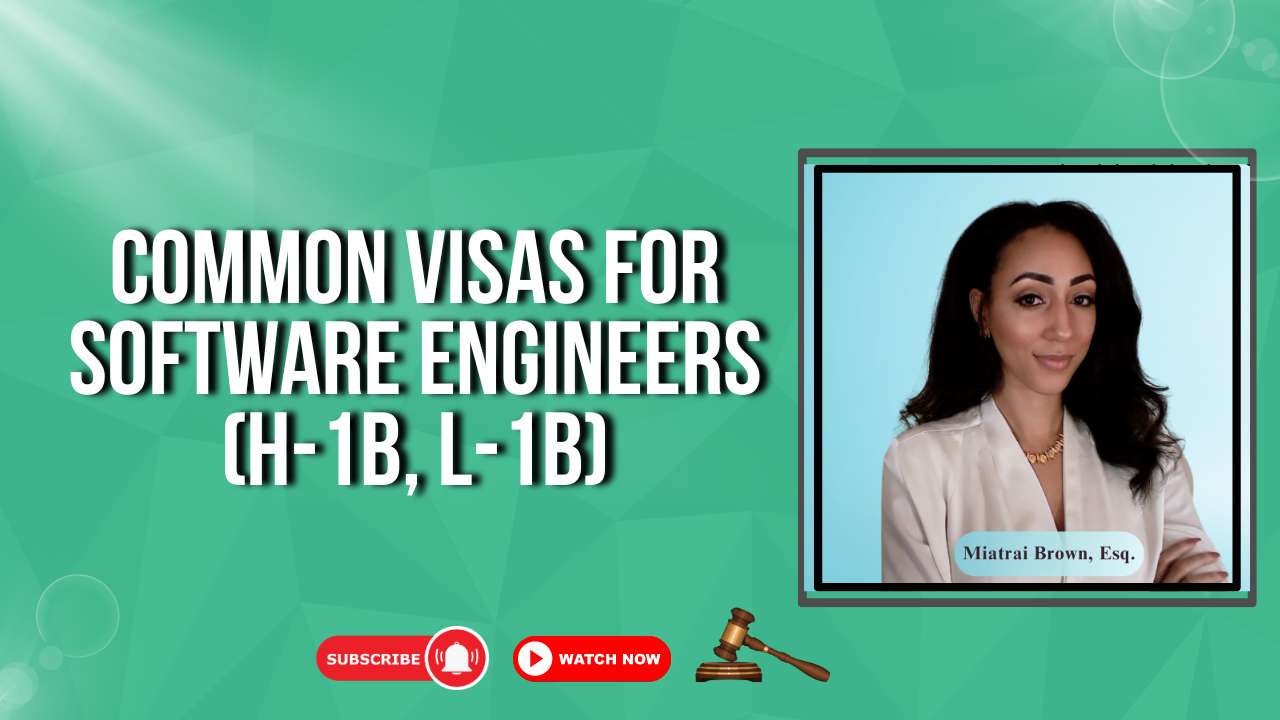For an extensive period of time, the American dream has been a source of attraction for professionals, business owners, and inventors worldwide, acting as a beacon of opportunity. For those with exceptional talents, outstanding records, or successful business ventures, the EB green card visa category represents a golden ticket towards permanent residency in the United States.
But with several types of coveted EB visas — each tailored to different professions and achievements — the path to obtaining one can seem dauntingly intricate. If the land of stars and stripes calls to you, this guide offers a comprehensive look at how you might secure your slice of the American pie.
What is an EB visa?
The Employment-Based (EB) visa is a collection of immigrant visa categories for foreign workers, investors, and entrepreneurs. These visas are designed to encourage top talent and investment in the United States, aiding in economic growth and diversity.
Unlike temporary non-immigrant visas, the different categories are a pathway to permanent residency, commonly known as a “green card.” They provide a means for individuals and their family members to live and work in the United States permanently.
What are the different types of EB visas?
The United States Citizenship and Immigration Services (USCIS) offers five preference categories for EB visas, each serving a distinct purpose and applicant profile.
- EB-1 : Priority Workers – Reserved for those with extraordinary abilities, outstanding professors and researchers, and multinational executives and managers.
- EB-2 : Professionals with Advanced Degrees or Exceptional Ability – Open to professionals with advanced degrees or their equivalent and individuals with exceptional abilities in their field.
- EB-3 : Skilled Workers, Professionals, and Other Workers – This category is for professionals, skilled workers, and unskilled workers.
- EB-4 : Special Immigrants – For a specific, limited set of immigrants, such as religious workers, broadcasters, juveniles, and certain physicians.
- EB-5 : Immigrant Investors – This is for immigrant investors willing to invest significant amounts of capital into the U.S. economy and create or preserve at least 10 full-time jobs for qualifying U.S. workers.
These categories are not only distinguished by the nature of the work or business investment involved but also by the priority they receive in processing and the availability of visas.
Comparing the different types of EB visas
Each EB visa category has its own set of eligibility requirements, application process, and benefits. Here’s a brief comparison to help you discern which might be right for you:
• EB-1: This is one of the most prestigious of the EB visas, typically requiring no job offer if the applicant can demonstrate their exceptional abilities. The application process is comparatively quicker due to the high-priority status of EB-1 applicants.
• EB-2: Unlike EB-1, this category often requires a job offer from a U.S. employer, along with a labor certification. The exceptional ability route in this category is somewhat similar to EB-1, albeit with a more pronounced emphasis on the applicant’s qualifications. The national interest waiver category does not require a job offer.
• EB-3: This category is for professionals (with a minimum of a bachelor’s degree), skilled workers, and unskilled workers (with no educational requirement). It has a longer backlog of available visas due to the annual limits of these categories.
• EB-4: This is a unique category designed for individuals with specific circumstances, such as religious workers or translators for the U.S. military.
• EB-5: This category is for investors who are able to invest either $1.05 million or $800,000 (in high-unemployment or rural areas) in a new commercial enterprise that employs at least 10 full-time U.S. workers (excluding the applicant).
The decision on which to pursue often hinges on one’s professional background, the job market in their field, and the ability to meet the visa-specific criteria.
Who is eligible for the EB visas?
To be eligible for any of the EB visas, you generally need to fulfill certain requirements:
• Have a valid job offer in the United States (unless applying under certain self-petitioning categories, like some in EB-1, EB-2 NIW, or EB-5).
• The job must match the category under which you are applying.
• Provide proof of the necessary qualifications and experience, often in an internationally recognized career or academic field.
• For investors, you must engage in a substantial capital investment in a new or existing for-profit U.S. business that directly or indirectly results in the creation of full-time jobs.
It’s important to note that there are nuanced details and exceptions within each category. Understanding these details is crucial to a successful application.
Which EB visa should you choose?
Choosing the right EB visa primarily hinges on your circumstances and goals. To assist you in making your choice, take into account the following:
• Your professional profile: If you have an extensive track record in your field and are widely recognized, EB-1 could be a good fit. If you possess a master’s degree or have exceptional abilities, EB-2 may be your pathway.
• Availability and backlog: Checking the U.S. Department of State’s Visa Bulletin will give you an estimate of the current wait time for each visa category.
• Investment capabilities: If you have significant capital to invest in the U.S. economy, then the EB-5 visa could be your route, especially if you seek to run your own business in the U.S.
• Job market relevance: The demand for certain professions can affect the relative ease of obtaining an EB-2 or EB-3 visa within that field.
Consulting with an immigration attorney can provide valuable insights into which visa best suits your specific objectives and how to prepare a robust application.
Navigating the Application Process
The EB visa application process is complex, requiring meticulous attention to detail. This involves several steps:
Step 1: Gather the necessary documents, which may include educational certificates, letters of recommendation, and proof of your achievements.
Step 2: The employer, if applicable, will then need to complete a labor certification, unless applying under the self-petitioning categories of EB-1A (for extraordinary ability), EB-2 NIW (National Interest Waiver) or EB-5 (for certain investments).
Step 3: Filing the Form I-140, Immigrant Petition for Alien Worker, with the USCIS, along with all supporting documents.
Step 4: For certain applicants, there may be a waiting period for a visa number to become available if the demand exceeds the annual limit for visa issuance. Once a visa number is available, you can apply for the adjustment of status (Form I-485) if inside the U.S., or an immigrant visa with the Department of State if you are outside the United States.
Step 5: If your Form I-485 application is approved or if you secure an immigrant visa abroad, you will be granted conditional permanent residence if you applied under EB-5.
It’s important to note that some EB visa categories have limited annual quotas, which can lead to extended wait times for certain categories. Consulting with an immigration attorney can help ensure that your application is properly prepared and submitted on time. Understanding and fulfilling each step with precision can significantly bolster your chances of success in securing permanent residence.
If you have questions relating to the EB visas, we would be happy to review your case, guide you through the necessary legal procedures, and answer any questions you may have regarding your application.



